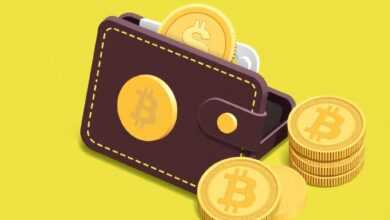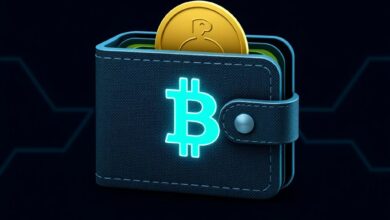How to buy cryptocurrency in 2025

Before you take the plunge into the world of digital assets, ensure you have a reliable wallet set up to keep your investments secure. Wallets come in various forms, including hardware and software options, catering to different user preferences. Choose a beginner-friendly solution that aligns with your security needs and ease of use.
Next, consider how you will convert your fiat currency into crypto. Numerous exchanges facilitate this process, allowing users to buy crypto efficiently. Research popular platforms for their fees, supported currencies, and verification processes to find one that suits your requirements.
As a first-time buyer, it’s wise to start with small investments. This approach helps mitigate risks while you become familiar with market trends and trading strategies. Monitor market movements closely; understanding price fluctuations can significantly enhance your investment decisions.
Finally, stay informed about regulatory changes affecting cryptocurrency markets. As governments adapt to the growing popularity of digital assets, being aware of new rules can help you make better-informed choices when managing your portfolio.
Selecting a Reliable Exchange
Choose a platform with a strong reputation and positive user reviews. Look for exchanges that offer high security standards, including two-factor authentication and cold storage for assets. A transparent fee structure is also crucial; compare transaction fees and withdrawal costs across platforms.
Consider whether the exchange supports your preferred payment methods. Some platforms accept bank transfers, while others may allow credit cards or digital wallets. Ensure the exchange has beginner-friendly features, such as an intuitive interface and educational resources to aid new investors.
Investigate the range of cryptocurrencies available on the exchange. A diverse selection can enhance your investment options. Additionally, check if the platform allows easy access to wallets for secure storage of your digital assets after you buy crypto.
Customer support plays a key role in your experience. Opt for exchanges that provide responsive customer service through multiple channels, including live chat or email support. This ensures assistance is readily available should any issues arise during transactions.
Lastly, verify the regulatory compliance of the exchange within your jurisdiction. Platforms adhering to local laws foster trust and protect users against potential fraud or malpractice.
Understanding Wallet Options
For securing your assets, selecting the right wallet is paramount. Here’s a breakdown of wallet types to help you make an informed decision.
- Hot Wallets: These are connected to the internet and ideal for active trading. They allow quick access to buy crypto but come with higher security risks.
- Cold Wallets: Offline storage solutions that offer enhanced security. Best suited for long-term investment, they protect against online threats. Examples include hardware wallets like Ledger or Trezor.
- Mobile Wallets: User-friendly options available on smartphones. They facilitate everyday transactions but ensure robust security measures are in place due to their connectivity.
- Web Wallets: Accessible through browsers, these wallets are convenient for beginners looking to manage fiat and cryptocurrencies without complex setups. However, rely on trusted services to mitigate risks.
- Paper Wallets: A physical method of storing keys, offering maximum security from online attacks. Ensure proper handling and storage to avoid loss or damage.
Select based on your usage frequency and security needs. For beginners, mobile or web wallets provide a straightforward entry point into managing investments, while seasoned investors may prefer cold storage for peace of mind.
Always remember to enable two-factor authentication and keep backups of your keys regardless of the wallet type you choose. This practice enhances protection against potential loss or unauthorized access.
Analyzing Market Trends
To make informed investment decisions, monitor the price movements and trading volumes of various assets regularly. Utilize analytical tools like Moving Averages and Relative Strength Index (RSI) to identify potential entry and exit points.
Examine the correlation between fiat currency fluctuations and cryptocurrency prices. Economic indicators such as inflation rates, interest rates, and geopolitical events can heavily influence market sentiment. Stay updated with financial news to anticipate shifts that may affect your investments.
Engage with social media platforms and forums to gauge community sentiment. Public perception can drive short-term price actions significantly. Tools like Google Trends can help analyze rising interest in specific tokens or projects.
Consider the performance of major exchanges during periods of high volatility. Issues such as downtime or increased transaction fees can impact user experience and market confidence. Choose beginner-friendly platforms with a solid reputation for reliability.
Lastly, track developments within blockchain technology itself. New upgrades or partnerships can enhance a project’s value proposition, impacting long-term viability. By staying proactive in trend analysis, investors can better position themselves in this dynamic environment.
Securing Your Investments
Utilize hardware wallets for maximum security. These devices store your assets offline, significantly reducing the risk of hacking compared to online solutions.
Enable two-factor authentication (2FA) on all accounts related to trading platforms and wallets. This adds an extra layer of protection against unauthorized access.
Regularly update your software and wallet applications. Developers frequently release updates that patch vulnerabilities, ensuring your investments remain safe from emerging threats.
Consider diversifying your assets among multiple wallets. By spreading your holdings across different locations, you minimize the impact of potential breaches on any single wallet.
Be cautious with public Wi-Fi networks when accessing exchanges or wallets. Use a Virtual Private Network (VPN) to encrypt your internet connection, protecting sensitive information from prying eyes.
Keep track of phishing attempts. Always verify URLs before entering credentials or transferring funds. Bookmark legitimate sites to avoid falling victim to look-alike scams.
Educate yourself continuously about security practices in this space. Knowledge is a powerful tool in safeguarding your investments against fraud and theft.







